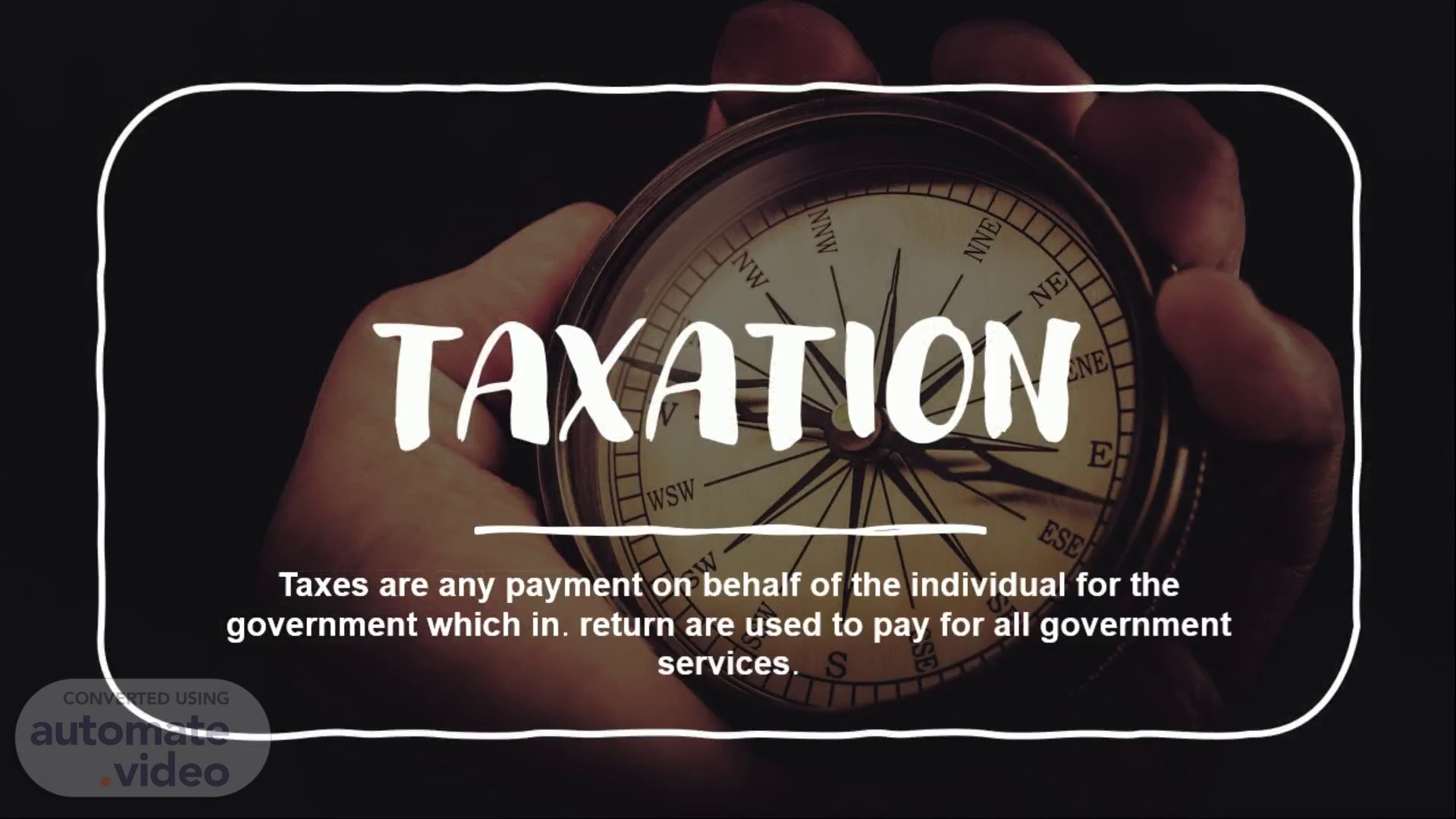Scene 1 (0s)
A closeup photo of a hand holding a compass. TAXATION.
Scene 2 (26s)
Taxation during. Precolonial Era Spanish Era American Era Japanese Era.
Scene 3 (35s)
Precolonial Era. Early Filipinos practiced a system of taxation before the Spaniards took over..
Scene 4 (45s)
tax (called buwis or handug , with the variant handog ) came in forms of crops or goods, which the people living under the datu share a portion of their harvest or property, in exchange for security and protection..
Scene 5 (1m 1s)
Were, to be sure, frequently issued, but they were almost invari-ably recalled as soon as the condition which made them were understood, and the system o taxation, taken as whole, as it stood on the statute books, was not ill adopted to the character of the people and their economic life..
Scene 6 (1m 39s)
Spanish Era. Taxes during the Spanish period was compulsory . Filipinos between 16 to 60 years of age were entitled to be taxed in cash or in kind or full installment basis. Like the other programs implemented by the King of Spain, the tribute was abused by the Spanish government authorities in the Philippines. It was abolished by the King in 1884..
Scene 7 (2m 9s)
Taxes during the Spanish period was compulsory. All the Spanish Colonies in America and the Philippines were required to pay taxes for two reasons. As recognition of Spain's Sovereignty over the Colonies.
Scene 8 (2m 29s)
Taxes during the Spanish period was compulsory. … As recognition of Spain’s Sovereignty over the Colonies. To defray the expenses of pacification (The act of forcibly suppressing hostility within the colonies) and governance, thereafter. Tax compulsory not just us paying for public labor and products; it is additionally a critical fixing in the common agreement among us and the economy. Considering legislatures responsible energizes the viable organization of duty incomes and, all the more generally, great public monetary administration..
Scene 9 (3m 14s)
American Era.
Scene 10 (3m 21s)
On January 1, 1931, during Collector Holting's tenure, the Bureau underwent its first reorganization, with the introduction of eight (8) divisions: Accounting, Cash, Clerical, Inspection, Law, Real Estate, License, and Records. The Real Estate and License Divisions were only allowed to collect money for the City of Manila. The Real Estate, License, and Cash Divisions were abolished in May 1921 by Act No. 299 , and their powers were transferred to Manila City. The Bureau was left with five (5) sections because of this transfer: Administrative; Law; Accounting; Income Tax; and Inspection. Following that, the Bureau created the Examiner's Division, formerly the Income Tax Examiner's Section, which was eventually amalgamated with the Income Tax; and the Secret Service Section, which was responsible for detection and surveillance but was later abolished on January 1, 1951. From 1921 until 1914, the Bureau's structure remained almost unchanged, except for minor adjustments including the introduction of the Miscellaneous Tax Division in 1939..
Scene 11 (5m 42s)
Recomendation. Tax reforms should be done at the start of an administration; they should be presented as a critical component of a comprehensive public sector reform program; in an environment where timely, upward adjustments in existing tax rates are difficult to legislate, ad valorem taxation should be preferred to specific taxation; successful reforms require broad political support; and, most importantly, the President must have the political will to implement the reforms. The next phase of tax reforms should prioritize extending the tax base, increasing tax yield, improving the system's response to changes in economic activity, and streamlining tax administration. The focus of the reform program should be on, A greater reliance on corrective or Pigouvian taxes; A higher rate and broader VAT base; Fiscal incentive rationalization, and Flat and lower income taxes..
Scene 12 (7m 8s)
Japanese Era.
Scene 13 (7m 15s)
ISSUE. At the outbreak of World War II, under Japanese regime (1942-1945) the bureau was combined with the customs office and was headed by a Director of customs and Internal Revenue..
Scene 14 (7m 39s)
The restoration event itself consisted of a coup d’état in the ancient imperial capital of Kyōto on January 3, 1868. The perpetrators announced the ouster of Tokugawa Yoshinobu (the last shogun)—who by late 1867 was no longer effectively in power—and proclaimed the young Meiji emperor to be ruler of Japan. Yoshinobu mounted a brief civil war that ended with his surrender to imperial forces in June 1869. Economic and social changes paralleled the political transformation of the Meiji period. Although the economy still depended on agriculture, industrialization was the primary goal of the government, which directed the development of strategic industries, transportation, and communications. The first railroad was built in 1872, and by 1890 the country had more than 1,400 miles (2,250 km) of rail. Telegraph lines linked all major cities by 1880. Private firms were encouraged by government financial support and aided by the institution of a European-style banking system in 1882. Those efforts at modernization required Western science and technology, and, under the banner of “Civilization and Enlightenment” (“ Bunmei kaika ”), Western culture, from current intellectual trends to clothing and architecture, was widely promoted..
Scene 15 (9m 54s)
GROUP 3. • 0 0.9 i Mieeo. Abe , Jenz Denysse. Baroro , Jazzlyn Mae.
